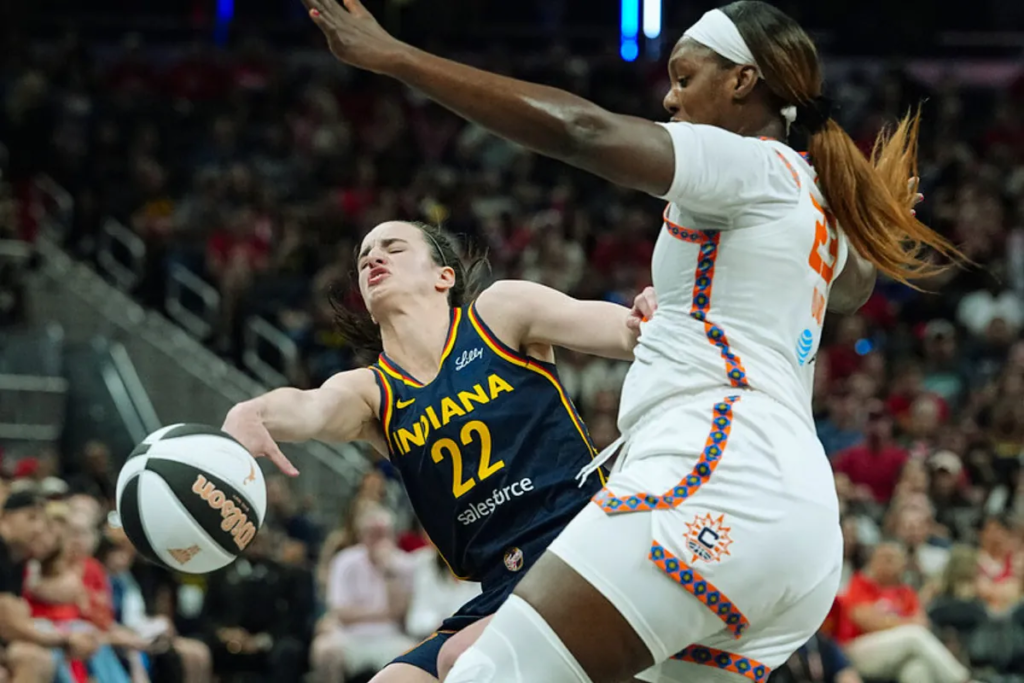The WNBA is once again under scrutiny. On Wednesday, ESPN journalist Alexa Philippou reported that the league will not suspend any players involved in Tuesday’s altercation between the Indiana Fever and the Connecticut Sun. The situation is especially sensitive as one of the main targets was Caitlin Clark, currently the most high-profile and marketable figure in women’s basketball.
During the third quarter of the game, Connecticut guard Jacy Sheldon elbowed Clark in the face while defending her. Clark responded with a shove, which led to a scuffle in which Marina Mabrey, also from the Sun, knocked her down. Mabrey was assessed a flagrant foul 2 – which carries a fine but no suspension – while Sheldon was ejected from the game but received no further punishment.
Fans voice concern over league’s response
This isn’t an isolated incident. Clark has been the subject of repeated physical contact throughout the season. In 2024, during a matchup against the Chicago Sky, then-guard Chennedy Carter delivered an off-ball shove to Clark. The league upgraded the foul to a flagrant 1, issuing only a standard fine.
There’s a clear pattern: the league has been too lenient in penalizing plays that, while masked as competitive intensity, are clearly part of a broader intimidation strategy against Clark. This raises not only sporting concerns but also questions about player safety. Clark has already missed five games due to a left calf injury.
A vital asset to the WNBA’s financial success
The lack of protection also threatens the business side of the league. Without Clark on the floor, the WNBA loses viewership. According to Front Office Sports, Indiana games without their star averaged 864,500 viewers. Her return against the New York Liberty drew over 2.2 million. Financially, Professor Ryan Brewer estimates that Clark could help generate more than $1 billion in revenue for the league this season.
Caitlin Clark is not just a player – she is the commercial, media, and sporting engine of the WNBA. Ignoring this reality with token penalties sends the wrong message: that attacking the league’s most valuable asset has no real consequences.
The WNBA now faces an urgent responsibility: to protect its most important player, not just for fairness on the court, but for the long-term health and future of professional women’s basketball.
Read the full article here

